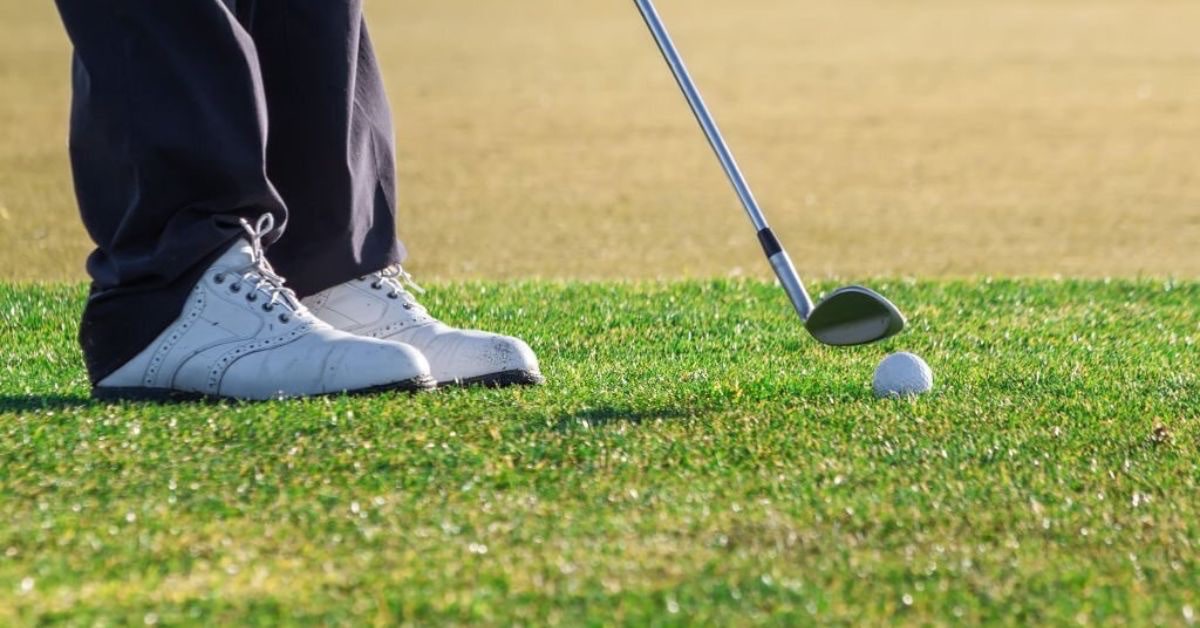For many golfers, the 60 degree wedge can be hit or miss — to put it lightly!
I’ve found that the best bounce for 60 degree wedge sole grinds boils down to your attack angle, swing style, and common turf conditions at your course.
In this post, I explain what wedge bounce is, the best option for each swing, and the varying bounces offered by wedge manufacturers.
I’ll also detail which bounce is more suitable for low, mid, and high handicappers to optimize your versatility and greenside spin.
After reading, you’ll know what sole bounces are available for you and which will help you make clean contact with the ball and enhance your short game.
Let’s get right into it!
What Is Bounce on a Wedge?
The bounce on a wedge refers to the degree of angle separating the low point of the sole and the leading edge. More bounce means the leading edge is raised higher off the turf, while less bounce means it sits closer to the turf.
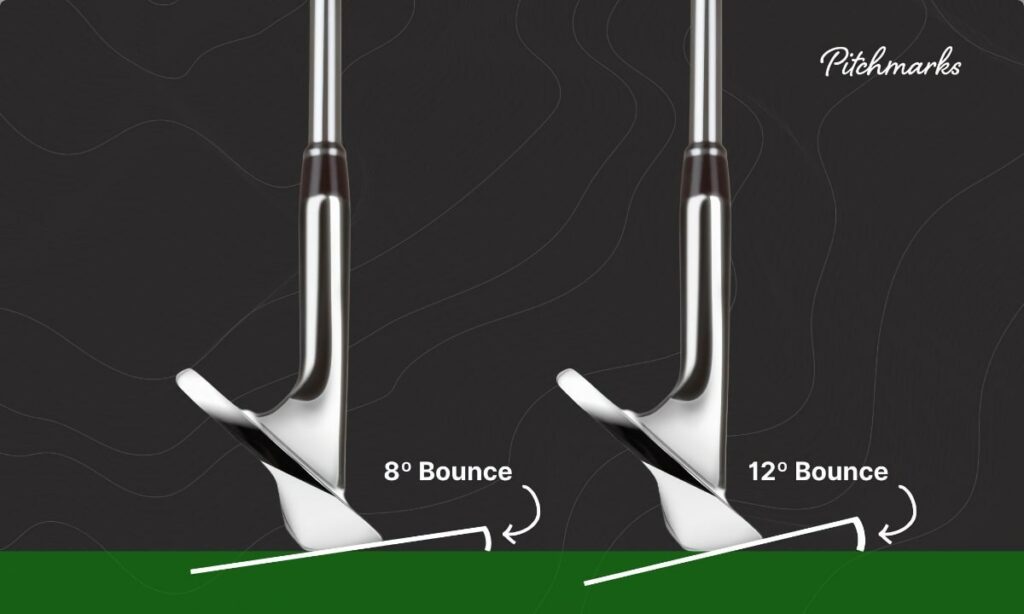
Wedge bounce can be categorized as either low, medium, or high:
- Low Bounce: Ideal for getting the leading edge under the ball on tight lies or for clean flop shots. It’s also better for steeper attack angles.
- Medium Bounce: Versatile option to suit an array of players and conditions.
- High Bounce: The most forgiving design, as the increased bounce helps the clubhead off the turf or sand to promote clean contact with the ball.
The Club Champion team highlights the importance of wedge bounce in the video below. You’ll notice the differences in spin rate and launch between a high and low bounce wedge off firm and soft turf:
The launch monitor data demonstrates that high-bounce wedges provided better turf interaction, cleaner contact, and increased spin rates.
Conversely, a low, 4-degree bounce produced superior results on firmer turf, delivering over 1300 rpm more spin than the higher bounce option.
But, what’s the best bounce for a 60 degree wedge specifically? Read on!
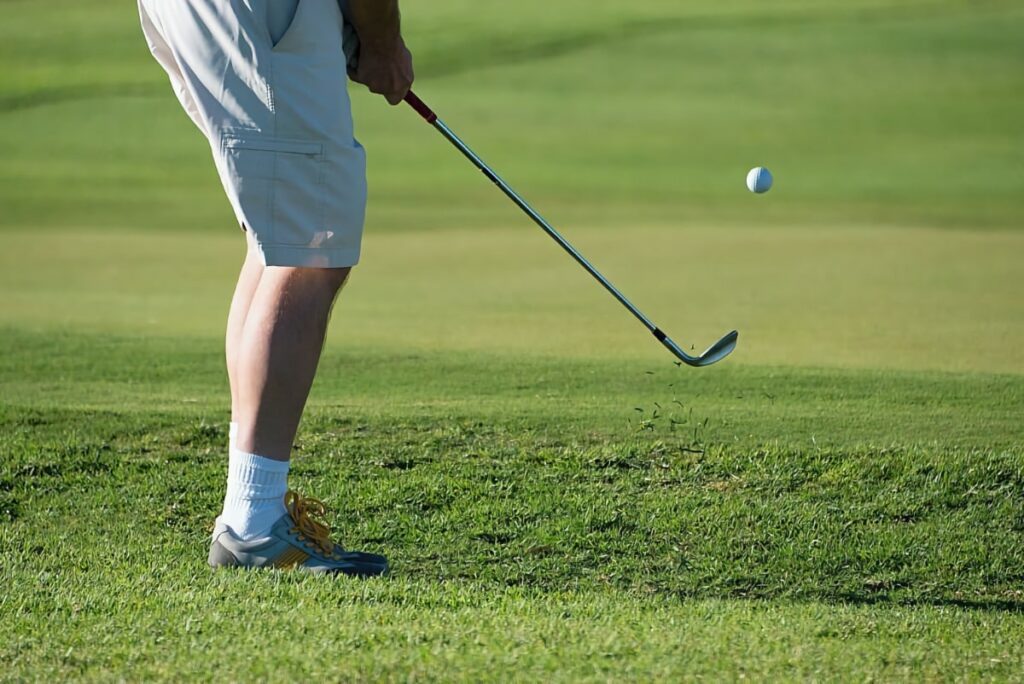
The Best Bounce for a 60 Degree Wedge
I’ve found wedges with 4 to 6 degrees of bounce the best fitting for a 60 degree wedge. The lower bounce makes it easier to open the clubface and slide it under the ball for a high-launching flop shot.
Before discrediting the other bounce angles, keep reading for a broader overview to make a well-informed decision for your game.
Low Bounce (4-6°)
A low-bounce grind is typically angled between 4 to 6 degrees. It provides minimal bounce off the turf and during bunker play.
My 60-degree sole carries 6 degrees of bounce, and I find it easy to get under the ball on greenside shots and land the ball softly near my target.
Low-bounce wedges are best designed for firmer turf conditions, where the bounce is detrimental to the cleanliness of your strike.
Medium Bounce (7-10°)
Medium bounce wedges provide 7 to 10 degrees of bounce and offer plenty of versatility if you play on variable course conditions.
A medium bounce design works on several turf conditions and excels for shallow and neutral attack angles.
It’s a versatile grind that allows you to open the clubface on flop shots and close it on fuller short game shots.
High Bounce (10°+)
The highest-bounce wedges are angled beyond 10 degrees and are phenomenal on wet, soft ground where the club has a tendency to dig into the turf.
I like the forgiveness of a high-bounce wedge, as it minimizes the risk of chunking your shots. For this reason, I prefer a high-bounce grind for my sand play because it helps me navigate the sand and promote a clean strike.
My sand wedge carries 14 degrees of bounce, making it a reliable companion on bunker shots. Overall, it favors players with steeper attack angles who tend to take juicy divots on greenside strikes.
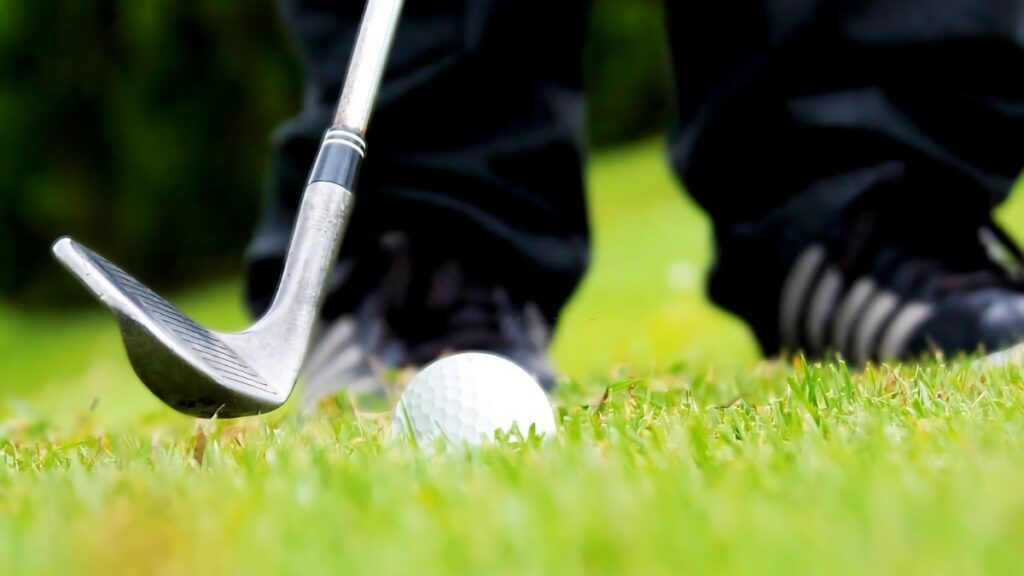
When Should You Use a 60 Degree Wedge?
While the 60 degree wedge isn’t always the best option on the course, it’s certainly a versatile club. With a delicate touch, it can be lethal around the greens.
Here are some of the top use cases for a 60 degree lob wedge:
Flop Shots
My lob wedge is the best club in my bag to help me execute the flop shot.
Simply put, the high degree of loft simplifies getting the clubface under the ball for an elevated strike and a soft landing. Time it right, and it glides right under.
A low bounce 60 degree wedge is best for playing flop shots from a tight lie on firm turf. But, a medium bounce is best for out the rough or on medium-to-soft turf.
Chip Shots
Another use for the 60 degree wedge is for delicate chips around the greens.
While I’ve learned to chip with a low-bounce lob wedge, I feel a medium bounce is a more suitable option. It’ll give you a balance between loft, clean turf interaction, forgiveness, and spin for a controlled chip shot.
Pitch Shots
Lob wedges are also great for mid-range pitch shots into the green.
I use a 60 degree wedge on pitch shots when I want aggressive spin and to attack the flag from close range. I’m accustomed to a low 6-degree bounce, which gives me the height and bite for greater control.
In my experience, a medium-bounce 60-degree wedge is ideal for most players because of its versatility.
But, stick to higher bounce designs if you’re a steep swinger. You cannot afford to lose ball speed and spin by chunking your shots as you need clean contact.
Bunker Shots
The 60 degree wedge is also a great option for bunker shots.
I’m a fan of higher-bounce grinds for sand play because of the forgiveness they provide. The bounce propels my clubface towards the ball, reducing swing speed loss and the risk of chunking my shot.
A medium bounce wedge will work as well. However, it’s not as forgiving through the sand. I suggest avoiding low-bounce wedges for bunker play because it’s challenging to navigate through the sand and strike your ball cleanly.
Short Approach Shots
I also use my 60 degree wedge for full approach shots inside 75 yards.
The apex and spin from this club prompt the ball to stop rapidly for distance precision. The medium bounce grind thrives on full shots, allowing me to deloft the clubface for optimal distance while retaining control.
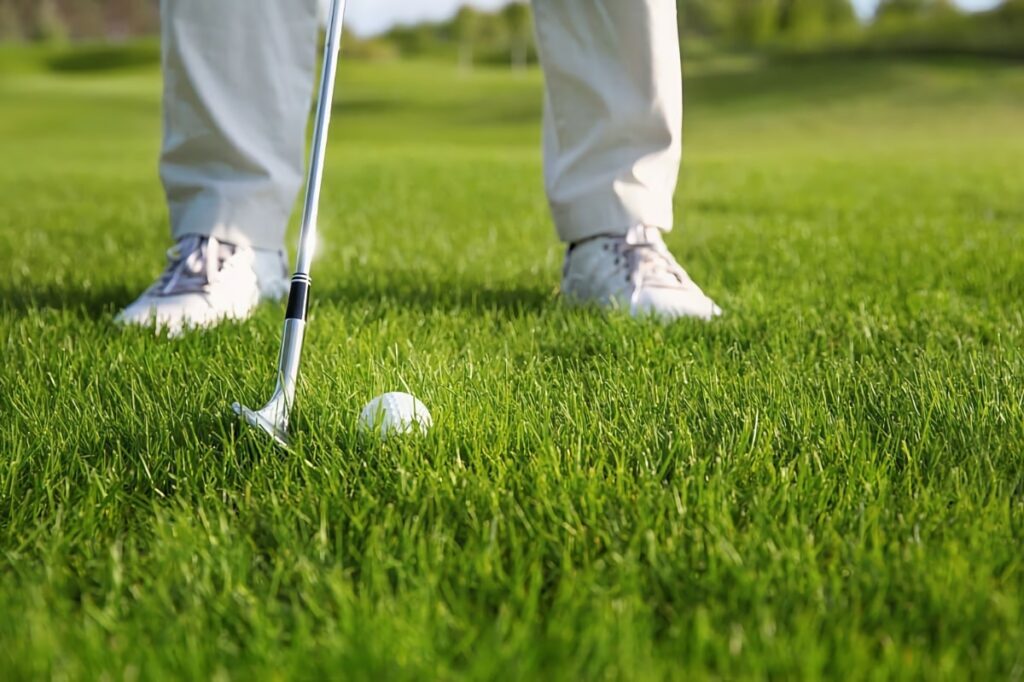
Which Brands Should I Consider for Wedges?
These are some of the most renowned brands when it comes to wedges:
Titleist Vokey
Vokey wedges offer a wealth of 60 degree wedge grinds to suit every attack angle and turf condition.
The L grind is the only low-bounce grind, which I personally favor. The M and S grind are medium bounce options. Finally, D and K bounce high on soft turf.
Cleveland
Cleveland keeps their bounce offerings simple, with only three 60-degree options on the table — low, mid, and full bounce.
Naturally, the low signifies a relatively low amount of bounce, while the high bounce grind provides increased levels of reaction off the turf.
Callaway
In general, Callaway wedges favor higher bounce grinds. Four out of its six bounce versions are crafted for softer turf and steeper attack angles.
The C-grind has the lowest bounce but is still medium by industry standards. It’s joined by the Z-grind as the only other medium bounce design.
The J, S, X, and W-grinds all provide high levels of bounce.
TaylorMade
Like Cleveland, TaylorMade keeps its bounce options simple. A low, standard, and high bounce grind is fixed to 60-degree wedges.
Naturally, I find the low-bounce version easier to get under the ball and optimize spin and launch, but the high grind is the most lenient.
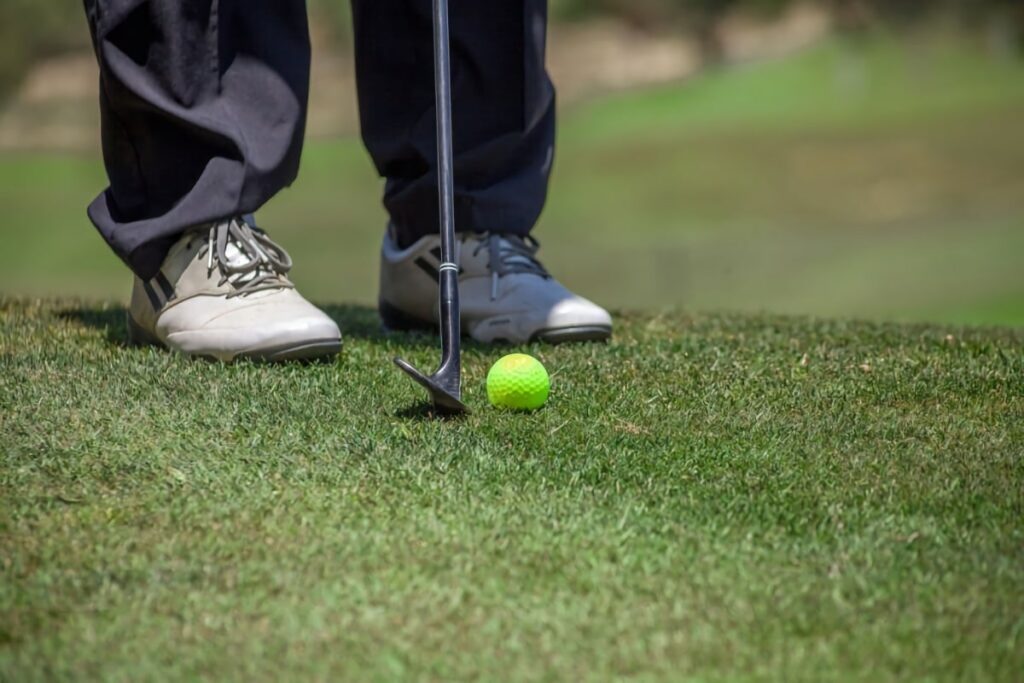
Final Thoughts
After testing a variety of designs for the best bounce for 60 degree wedge grinds, I’m confident a low bounce wedge is best. It simplifies opening the club face and sliding it under the ball to produce an elevated flop shot.
Although I love swinging my lob wedge, it’s not an easy club to tame. The open and compact clubface makes it difficult to consistently strike the ball. When you do hit it well, the loft can hamper your distance control.
I suggest avoiding the 60 degree wedge as a beginner, only start experimenting with it once you’re a consistent ball striker. Instead, stick to a medium or high-bounce sand wedge that promotes forgiveness and consistency.

